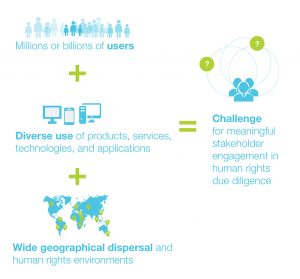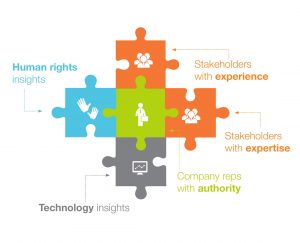How can technology companies engage with users—who number in the billions—on potential human rights challenges? 
The release of today’s working paper endeavors to answer this question. The paper was informed by a series of expert roundtables convened by Microsoft’s Technology and Human Rights Center around the world and produced by BSR, with input from the Center for Democracy and Technology.
What follows are the key takeaways from the report, in terms of whom to engage and how to engage technology issues on human rights challenges.
Whom to engage
The Guiding Principles on Business and Human Rights advise businesses to consult rights holders by drawing on internal and/or independent external human rights expertise and engaging potentially affected groups and stakeholders in meaningful consultation.
 Ultimately, this “and, not or” model provides information and communications technology (ICT) companies with a broad range of information and experiences, from both rights holders and intermediary stakeholders, which helps companies make informed decisions.
Ultimately, this “and, not or” model provides information and communications technology (ICT) companies with a broad range of information and experiences, from both rights holders and intermediary stakeholders, which helps companies make informed decisions.
How to engage
There are many productive ways for technology companies to engage with consumers on human rights challenges. Because human rights situations are dynamic, approaches will depend on the company and the human rights contexts.
However, we do have some insights to share that may offer additional guidance for rights holder engagements, which you can find outlined in the full report.
In our experience, when companies integrate rights-holder engagement into human rights due diligence, they enter with trepidation and exit with appreciation. We believe that more meaningful approaches to rights-holder engagement will greatly enhance the impact, credibility and value of human rights due diligence, to the benefit of both the company and the rights holder.
